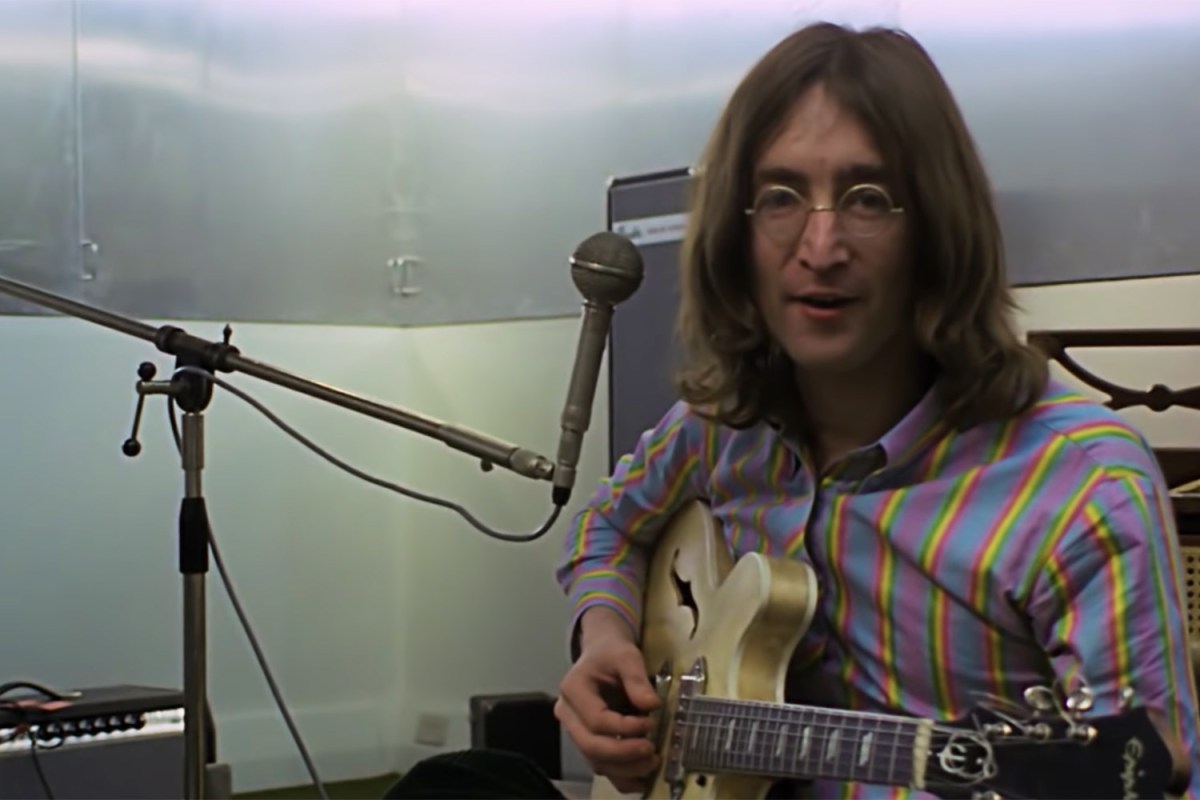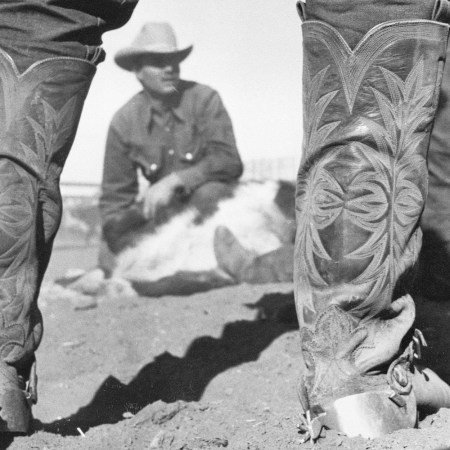Nota bene: All products in this article are independently selected and vetted by InsideHook editors. If you buy something, we may earn an affiliate commission.
This morning, director Peter Jackson released just over four minutes of footage from Get Back, a forthcoming documentary culled from 56 hours of footage of the band recording the Let It Be album. The film was supposed to have been released in 2020 but has been pushed to 2021 because of Covid-related production delays.
The footage is striking for a number of reasons. First, it’s kind of weird to see any Beatles footage we haven’t seen a million times already, but especially of such high quality that you could easily forget it’s over 50 years old. Also, granted it’s only a few minutes’ worth of very quick edits, but given that the band was in a fair amount of turmoil at the time and was in fact hurtling toward breaking up for good, it’s surprising to see how lighthearted the whole thing seems. For everything that’s been written about Let It Be over the years, you’d never guess that the people making it were having any fun at all.
Anyway, the best thing about getting this sneak peak at the documentary is obviously that we get to drool over all the incredible equipment they were using. It includes many of the iconic instruments they’ve come to be known for over the years, but also a few unexpected gems.
What’s most fascinating to me about their chosen gear is that it was all pretty much brand new at the time. With the exception of George’s roughly 10-year-old Les Paul, most of it had been made within the previous two or three years. It’s a complicated topic, and there’s much to be said about how manufacturing has changed, as well as this vague notion that older instruments have some sort of magic that newer ones don’t, but it’s still fun to think about the fact that these songs were recorded using gear you could just walk into any old music shop and buy on the spot.
Below, the 10 pieces I like staring at the most.

1957 Gibson Les Paul Standard “Lucy”
At some point in the late ’60s, Eric Clapton (who’s up to some truly ridiculous bullshit today) gave George Harrison the red 1957 Les Paul that came to be known as Lucy, because, as he noted in this video, he “already had one.” Remember, at the time, this was just a 10-year-old guitar, and it was by no means clear that in 60 years it would be worth somewhere in the neighborhood of half a million dollars — even had it not been owned by Eric Clapton and George Harrison. In 2013, the Gibson Custom Shop teamed up with Clapton and the Harrison estate to for a limited run of 100 exact reproductions of the guitar, which sold for right around $20k each. If you just want the general look, you can pick up a brand new Les Paul Classic in Cherry Red for $2,000.

1969 Fender Rosewood Telecaster
It doesn’t look like much, but George’s now-famous ’69 Tele was unique for its 100% rosewood construction: body, neck, fretboard, headstock, all of it made not from the standard mix of maple and ash but of the handsome dark wood usually reserved for fretboards alone. The result is a beautiful guitar that reportedly weighed somewhere around 13 pounds — nearly twice the weight of a standard Tele. There was a limited Fender Custom Shop run in 2008, one of which is currently up for sale for a pretty reasonable $4,500.

1965 Epiphone Casino
As legend goes, John picked up this 1965 Epiphone Casino after falling in love with one owned by Paul, and he played it regularly until his death in 1980. It’s a hollow-body guitar that’ll squeal like crazy if you don’t know how to control it, and it’s known for it’s throaty, almost boxy tone. An original from the era will set you back somewhere around $5,000, but there was a reissue called the “Elitist” released in 2013 that can be had for less than $1,500 and is by all accounts pretty great. And there’s a current production model available for about half that.

Hofner 500/1 Bass
Paul didn’t play a whole lot of different basses throughout the Beatles’ eight-year run, focusing primarily on what came to be known as the “Beatle Bass,” a mid-60s Hofner 500/1 violin-style number that’s inextricably linked to his legacy. There are faithful reissues out there for a couple grand.
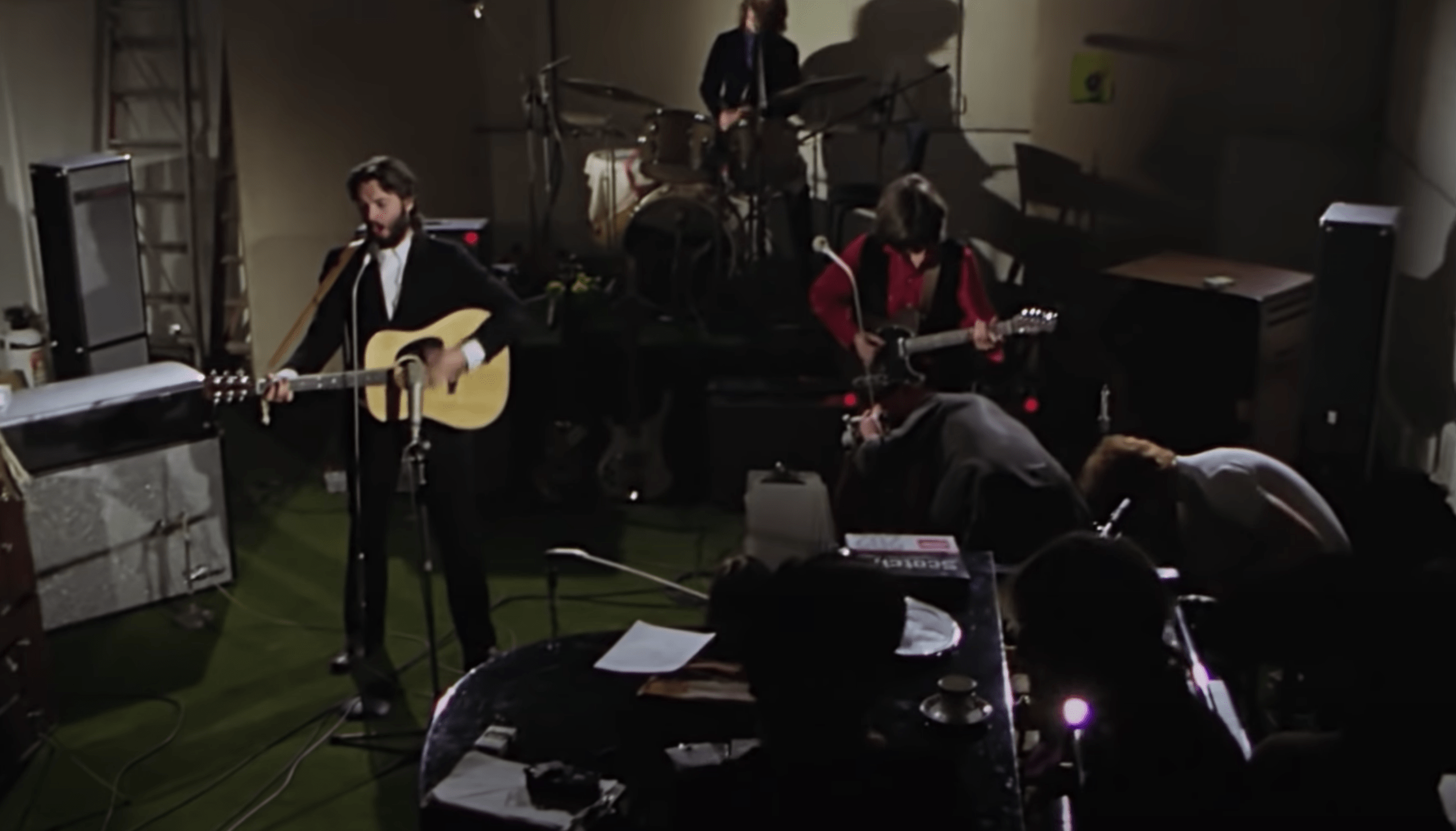
Martin D-28
The Martin D-28 is, by all accounts, the most recorded acoustic guitar of all time, so you’ve being hearing it your whole life and you probably haven’t even realized it. It’s a standard dreadnaught-style guitar that remains in production today. In the film, Paul’s playing a right-handed version strung upside down to accommodate his left-handedness, so this one may have belonged to John. Regardless, you can and should pick one up for yourself. The vintage market demands around $7,500 for late-’60s model. A new one, considerably less.

Gibson J-200
Less famous than the Martin D-28 or even the Gibson J-45, the J-200 is a stunner in its own right. It’s an oversized guitar that’s easily recognized by its ornate bridge and pick guard designs. At $4,650 brand new, they are not cheap. But a late-’60s model like the one John’s likely playing here would cost you around 50 percent more.

Fender Silver-Face Twin Reverb
The silver face in question refers to the plate on which the control knobs sit at the top of the front panel, which is different from the black-face models Fender had phased out just a year or two earlier and which have come to be far more desirable than their silver-faced younger siblings. The Twin Reverb is another hugely popular and influential amp, featuring 85 watts of power and a ton of pristine headroom. Fender currently makes a $1,300 reissue of the 1968 Twin, but it’s not an exact replication. A vintage one can be had for not a whole lot more.
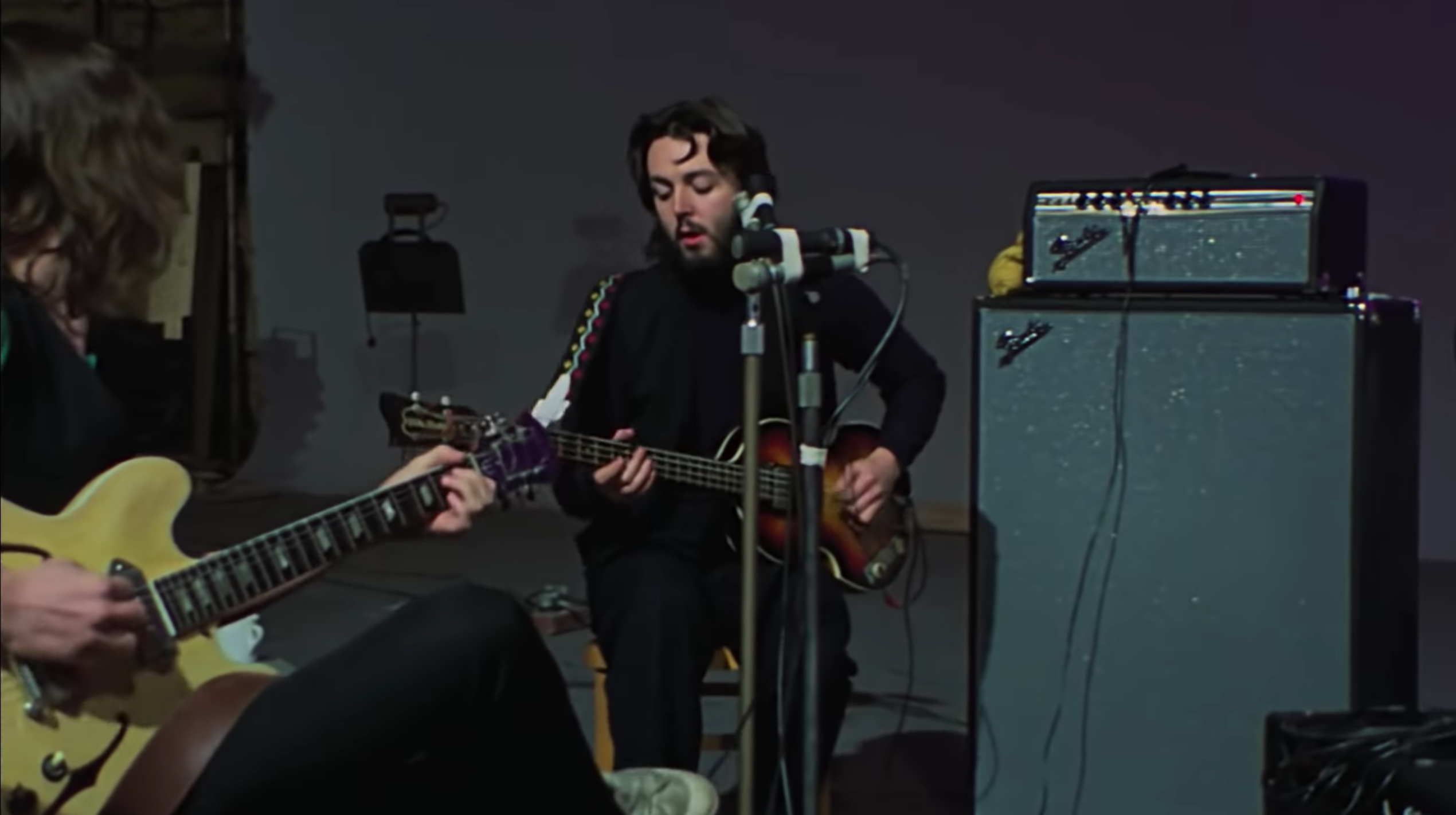
Fender Silver-Face Bassman
Paul’s go-to amp for much of the ’60s was the Fender Bassman — first the tweed model, then and black-face and, eventually, as seen here, the silver-face. The Bassman has come to be used more by guitarists than bass guitarists over the years, and it seems likely it was used for that purpose during these sessions too. Sadly, Fender hasn’t made the Bassman in years, but there is currently a really nice-looking ’68 just like Paul’s available for well under two grand.
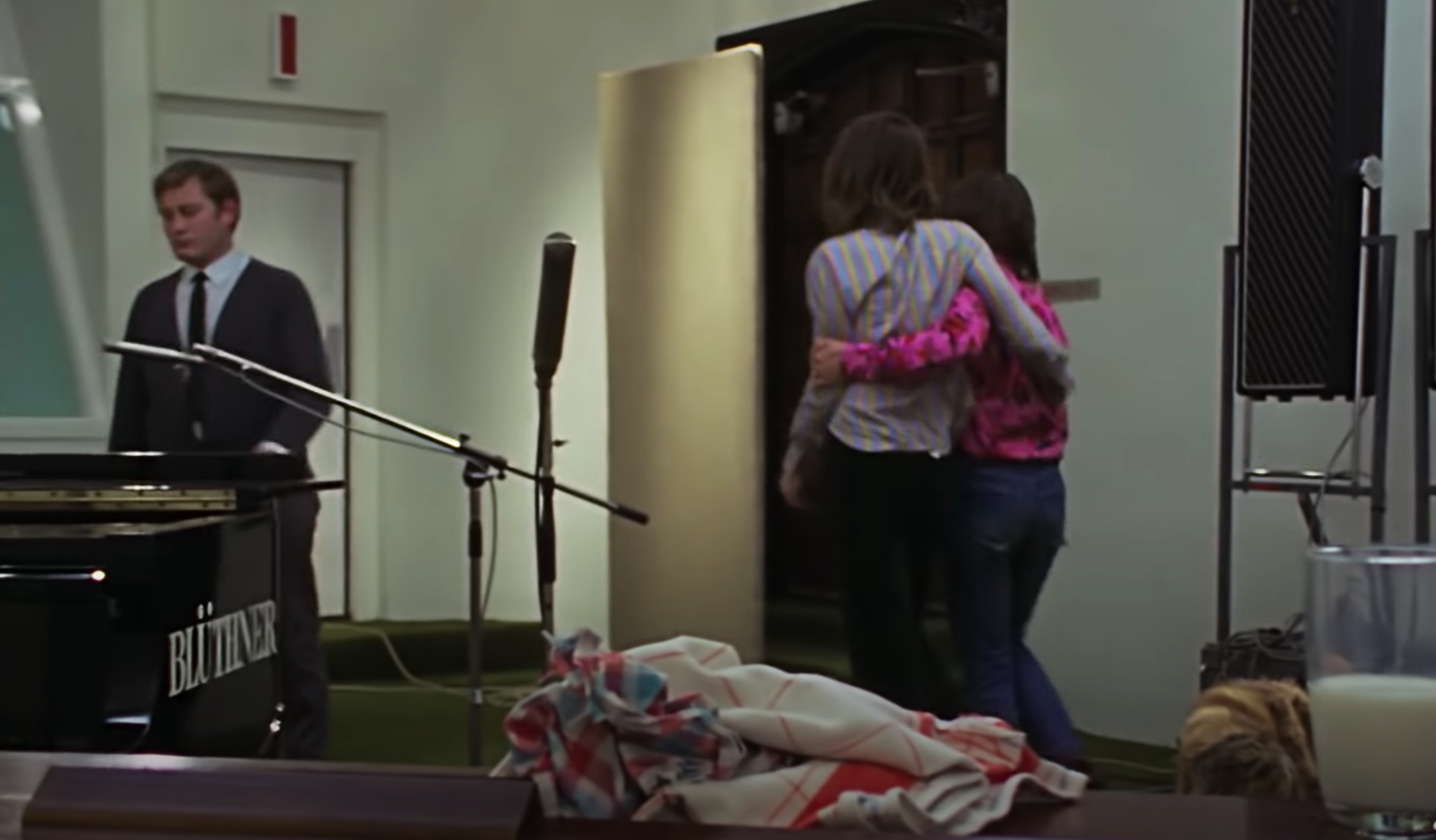
Blunther Model One Piano
I don’t know a whole lot about pianos, but I’ve been staring at studio photos of this one for years, and thus Blunther is probably the only piano brand I could name aside from Steinway. A new version of this piano, with a far less cool script logo on the side, costs $200,000, which … is more than I realized pianos could cost.

Fender Rhodes Electric Piano
Billy Preston’s contributions to Let It Be account for many of the album’s highlights, including his solo in the song “Get Back,” played on the Fender Rhodes, a 73-key electric piano that uses thin metal rods instead of strings, creating a unique sound that can also be heard all over records by the Doors, Stevie Wonder and many, many more throughout the 70s. Fender doesn’t make them anymore, unfortunately, and the old ones are getting pretty pricey.
We've put in the work researching, reviewing and rounding up all the shirts, jackets, shoes and accessories you'll need this season, whether it's for yourself or for gifting purposes. Sign up here for weekly style inspo direct to your inbox.
